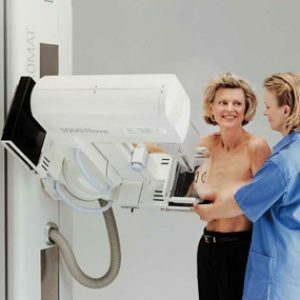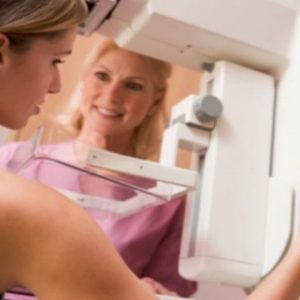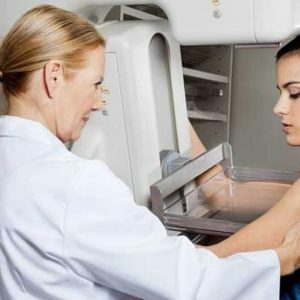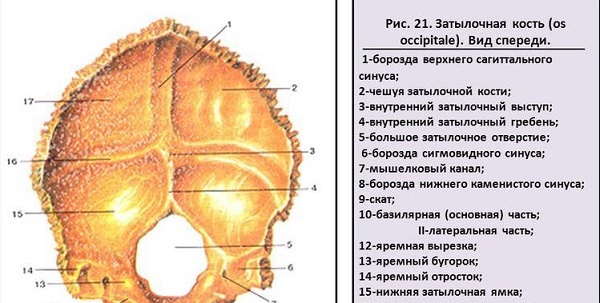Mammography - indications for the procedure and features of the procedure

Mammography is one of the most effective and effective diagnostic procedures allowing to assess the condition of the mammary glands and to reveal their diseases at the early stages of the development of the pathological process.What are the indications and contraindications for the procedure?How to prepare for mammography and how is the study going?About this and talk below.
Table of contents: The essence of the method When is the procedure prescribed?What signs can indicate breast cancer?Possible contraindications and limitations How to prepare for a mammogram?How does the procedure work?Explanation of the resultsThe essence of the method
Mammography is an x-ray examination of the mammary glands, which today is considered the most accurate and informative.Thanks to him, a specialist can reveal pathological changes in the tissue structures of the mammary glands, ahead of their nature, location and prevalence.
Important! Mammography allows you to diagnose the presence of tumor lesions localized in the mammary gland in the early stages of development, to the appearance of notable seals and other clinical symptoms, which is crucial for the timely and effective treatment of breast cancer!
According to experts, since the formation of the tumor in the mammary gland and until it can be detected by the method of palpation, it can take more than one year, which significantly complicates the subsequent therapy.
Breast mammography can be performed by the following methods:
-
 Radiography is the most common and affordable method for conducting mammography, the accuracy of which is more than 92%.
Radiography is the most common and affordable method for conducting mammography, the accuracy of which is more than 92%. - Magnetic resonance - the most modern method, which is carried out without X-ray irradiation using contrast agents.
- Ultrasonic - diagnostic method.This is an extremely safe variant of the study, therefore it is most often recommended that breastfeeding mothers and women awaiting the appearance of the baby.Under normal conditions, the ultrasound method is used as an additional diagnostic, because of its relatively low accuracy.
- Digital is a modern variant of mammography, it is characterized by minimal X-ray indices and better image quality in comparison with traditional mammography.
If the mammography was performed regularly and a malignant tumor was detected early, the following results can be achieved:
- avoid the need for a chemotherapy course;
- to achieve the most positive results of therapy and to shorten the duration of the treatment course;
- avoid the need for removal of the breast.
Please note: mammologists advise female representatives in the age category over 40 years to undergo mammograms at least once a year!And patients older than 50 years with a frequency - every six months!According to statistics, the use of mammography allowed to reduce the percentage of deaths from breast cancer by 35%!
When is the procedure prescribed?
Specialists recommend patients annual mammography for preventive purposes, subject to the following indications:
-
 mastopathy;Age category of the patient is over 40 years of age;
mastopathy;Age category of the patient is over 40 years of age; - ;
- problems with natural conception;
- the presence of tumoral neoplasms of a benign nature localized in the area of the mammary glands;
- obesity;
- disorders in the functioning of the thyroid gland;
- previous surgical interventions in the mammary gland;
- pathology of the pancreas;
- mastitis;
- cystic neoplasms in the area of the mammary glands;
- is an oncological disease;
- a genetic predisposition to breast cancer( the presence of a similar disease in close relatives);
- tumor neoplasms localized in the genital area.
Patients with these manifestations are at increased risk because they are most affected by breast cancer!Regular mammography will reveal the disease in the early stages and reduce possible risks to minimum indicators!
What signs can indicate breast cancer?
Doctors-mammologists allocate a number of anxious "bells" that can indicate malignant processes in the area of the mammary glands.
Pay special attention to the following clinical symptoms:
- presence of compaction in the area of the mammary glands;
- nipple deformation;
- painful sensations localized in the area of the mammary gland;
- appearance of specific secretions from the nipples;
- puffiness and change in breast size;
- reddening of the nipples;
- changing the contours of the breast;
- redness of the skin in the chest;
- excessive swelling of soft tissue structures of the breast with changes in the hormonal background associated with the menstrual cycle;
- chest pain during menstruation.
Important! The above clinical signs may indicate the development of mastitis, the formation of cystic and tumor lesions of a different nature in the mammary glands!Therefore, when they appear, you urgently need to contact a qualified specialist for professional advice and get directions for mammography!
In addition, doctors are required to prescribe mammography during the course of hormonal therapy( for monitoring treatment) during the preparation of the patient for surgical intervention in the mammary gland, as well as for monitoring the condition after surgery, chemotherapy,D.
Possible contraindications and limitations
 Mammography is strictly contraindicated for expectant mothers, as well as for women breastfeeding a baby.In this period, patients can be recommended ultrasound methods of investigation.
Mammography is strictly contraindicated for expectant mothers, as well as for women breastfeeding a baby.In this period, patients can be recommended ultrasound methods of investigation.
This procedure is not recommended for women under the age of thirty-five.The fact is that women of this age group have a fairly high density of tissue structures of the mammary glands, which significantly reduces the mammogram information.In such cases, ultrasound will be a more accurate and safe method of diagnosis!
Among the relative contraindications for mammography, the following can be distinguished:
- skin damage in the chest;
- traumatic nipple injuries;
- presence of implants in the mammary glands;
- induced abortion, performed less than half a year before mammography.
Note: with the above relative contraindications, the decision on the appropriateness and safety of mammography is made by the attending physician individually!
How to prepare for a mammogram?
This type of diagnostic study does not require any special training. However, in order for the mammography to be as informative as possible and give accurate results, the patient should follow the following recommendations:
- inform the specialist about the timing of the last menstruation;
- on the day of the study to refuse the use of deodorants, creams and other body cosmetics;
- do not wear any metal jewelry;
- a couple of hours before visiting a specialist to take a shower without using soap or gel.
Note: holding a mammogram is recommended no earlier than a week after the end of menstruation.Otherwise, the procedure can cause unpleasant sensations and the indicators of its informativity are significantly reduced.
In addition to the above basic rules for preparing for mammography, experts recommend that patients several days before the procedure exclude from their daily diet the following products:
- coffee;
- Energy;
- caffeinated beverages.
The fact is that caffeine can increase pain sensitivity, and also cause bouts of anxiety and anxiety, which is highly undesirable during the study!
How does the procedure work?
 Mammography is a virtually painless process.At its carrying out there can be insignificant uncomfortable sensations.However, soreness is possible only if the woman does not comply with the basic rules of preparation, the presence of contraindications or chronic pain in the area of the mammary glands.
Mammography is a virtually painless process.At its carrying out there can be insignificant uncomfortable sensations.However, soreness is possible only if the woman does not comply with the basic rules of preparation, the presence of contraindications or chronic pain in the area of the mammary glands.
Before the procedure, the specialist talks with the patient, examines the results of the collected history, possible complaints, etc.Then the woman needs to undress to the waist and stand in front of a special device - a mammogram, after which the specialist installs the mammary gland in the desired position.
During the study, the image of the mammary glands will be fixed on the X-ray film in various projections.Each of the patient's glands is examined in turn, this allows the specialist to analyze possible differences in the size and structural state of the breast.
The average duration of mammography is from 10 minutes to half an hour.To obtain the most accurate results of the study, during the procedure it is recommended, if possible, not to stir directly at the time of taking the picture, briefly to hold your breath.
How safe is a mammogram?
Conduction of mammography is associated with exposure to radiographic radiation, which has some negative impact on the patient's health.However, according to experts, the quantitative indicators of radiation that a woman undergoes during a study are minimal.Risks of development of radiation sickness or the appearance of tumoral neoplasms after the mammography are absent!
Of course, this kind of research should not be abused.However, if there are certain clinical indications, physicians can prescribe a mammogram up to five times throughout the month!
Explanation of results
The interpretation of the results is handled by a qualified mammologist. According to the international classification, the results of mammography can be evaluated in the following categories:
-
 0 - No necessary results for the diagnosis, the need for a re-examination or additional diagnostic procedures.
0 - No necessary results for the diagnosis, the need for a re-examination or additional diagnostic procedures. - 1 - Normal condition and size of the mammary glands, the absence of tumor growths and any pathological processes.
- 2 - Presence of a tumorous neoplasm of a benign character.
- 3 - The presence of a tumor that requires additional studies.The need for a repeat mammogram after six months.
- 4 - Presence of a suspicious tumor neoplasm, the need for a biopsy.
- 5 - High probability of malignancy in the tumor tumor, the need for a biopsy.
Important! Breast cancer is not diagnosed only based on the results of mammography! Setting such a diagnosis requires a biopsy, laboratory tests and other additional studies!
Mammography is the most accurate and informative method that allows to diagnose the presence of malignant neoplasms and other pathologies of the mammary glands at the earliest stages of development.Regular, preventive maintenance of the procedure will avoid the dangerous complications typical for breast cancer and significantly increase the effectiveness of subsequent treatment!
Betsik Julia, obstetrician-gynecologist



